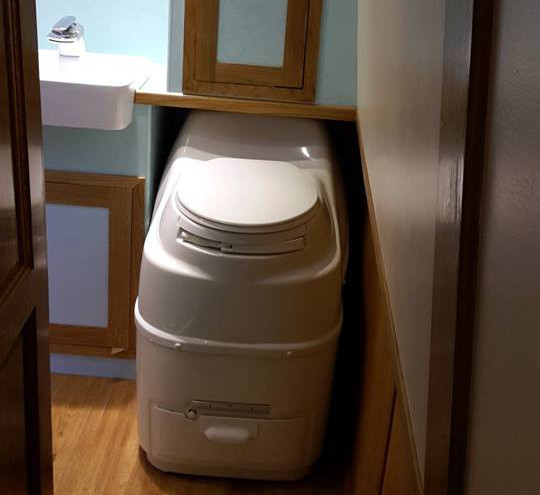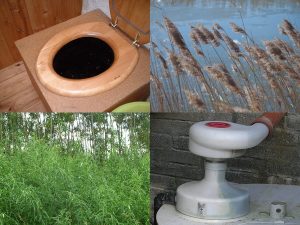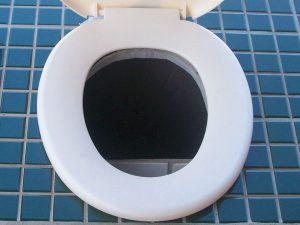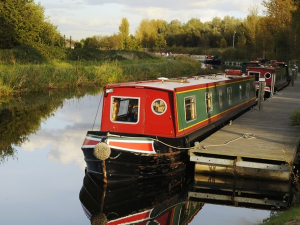First of all, why would you want to do that in the first place? Well, it’s because of the toxic nature of the chemicals used in chemical toilets – but we’ll blog about that later. For now, let’s talk about whether there’s an alternative.
Different toilets can be used in a narrowboat than in a camper van, because narrowboats aren’t subject to the acceleration, deceleration and sharp changes in direction that can happen with a camper van, and so the toilet doesn’t have to be fixed so rigidly. Composting toilets in a camper van have to be fixed to the floor with extra brackets. Also, if solids and liquids are going into the same chamber, then extra seals are required to stop liquids coming out of it.
People can be confused by the terminology, and I’ve been asked if compost toilets are so called because compost comes out of them or because compost goes into them. So I tend to call them either composting toilets (where obviously composting takes place) or urine diverting toilets, where it doesn’t. A composting toilet doesn’t separate solids from liquids, and so microbes have enough moisture and nitrogen to break down the waste (urine contains a lot of nitrogen). Urine separation means that solid waste dries out, which is good as regards odours, but the carbon:nitrogen ratio isn’t right for composting to take place, because all the nitrogen from the urine is lost. In this case, the finished product is raw waste, not compost. Therefore, you need to have some way of disposing of this waste. If you have land or you know someone with a smallholding, the waste can be added to a compost heap and be allowed to break down. This is the method Joe Jenkins champions in the Humanure Handbook.
On a narrowboat, a suitable product is a Separett Villa 9000 – the leading waterless toilet in the UK. It separates urine from solids, and therefore doesn’t claim to compost the waste. The problem on a narrowboat is what to do with the waste – you need somewhere to add it to a compost heap. The Sun-mar composting toilet doesn’t separate liquids and solids, but a small heating element drives off excess liquid (but not so much that composting can’t happen), and the extra heat helps the composting process. Composting doesn’t happen below 13°C, but once it starts, the microbial activity generates its own heat and the temperature rises rapidly as the microbes increase in number, until at around 55°C, pathogens are killed and you’re left with good compost. It’s odourless and safe, and can be given to anyone with a garden, or even tipped in the woods – it’s basically humus.
In a composting toilet, bacterial respiration turns solid carbon into gaseous carbon (i.e. the opposite of photosynthesis). The remainder is smaller in volume than the original material, and it’s compost. Six weeks is enough to get good compost if there’s a heating element. Also the heater contributes to heating your (small) space in cold weather, and gives you a nice warm toilet seat.
The Sun-mar also has a handle at the front to turn the compost so that it’s aerated, which also helps the composting process. As with all compost toilets, keep a bucket of mulch (carbon-rich material like sawdust etc.) to throw down the loo every time you use it.
For a camper van, a suitable model is the Sun-mar mobile, but with extra brackets and seals to stop the leakage of moisture. The Air-head is a model for camper vans too, but it has urine separation, which means that you have to add the material to a compost heap. This is easily doable if you’re going on holiday for a few weeks – just empty the contents of the Air-head into a compost heap on your return.
The added logistical problems of the Air-head are balanced by the fact that the Air-head is around 1/3 to 1/2 the price of the Sun-mar, and the Separett is even cheaper. All these toilets are more expensive than chemical toilets, but if you care about the environment, you won’t want to be part of a system that manufactures and has to deal with unnecessary toxins when bacteria will do the job perfectly well in a non-toxic way and produce useful compost at the same time. Also, there are follow-up charges involved with chemical toilets – you have to buy the chemicals and pay for waste disposal. A compost toilet is a lifetime investment that will require no further charges and won’t produce anything environmentally-damaging.





